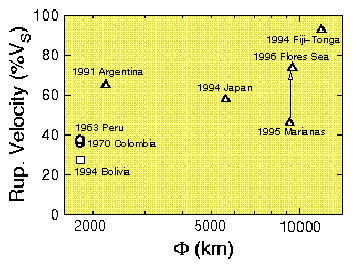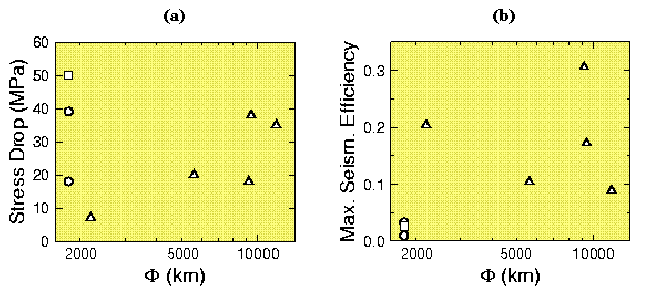


The rupture velocities (Fig. 1) and the maximum seismic efficiencies (Fig. 2b)seem to be a function of thermal structure. Low values for these parameters are typical for large deep earthquakes in warm subducting slabs. The Argentina event of June 23, 1991 appears to be an exception. The difference between the characteristics of this earthquake and other events in South American subduction zone could be related to different seismogenic processes. The aftershock frequency and the ``b-value'' for deep earthquakes increase with increasing thermal parameter (Fig. 3). All this suggests that the seismogenic processes for deep earthquakes are based on temperature dependent mechanisms.
Estabrook, C.H., 1999. Body wave inversion of the 1970 and 1963 South American large deep-focus earthquakes. J. Geophys. Res., 104, 28751-28767.
Estabrook, C.H. & Bock, G, 1995. Rupture history of the great Bolivian earthquake: slab interaction with the 660-km discontinuity? Geophys. Res. Lett., 22, 2277-2280.
Tibi, R., 2000. Broadband studies of the origin of intermediate-depth and deep-focus earthquakes, Ph.D. Thesis, Free University Berlin, Germany.
Tibi, R., Estabrook, C.H. & Bock, G., 1999. The 1996 June 17 Flores Sea and 1994 March 09 Fiji-Tonga earthquakes: source processes and deep earthquake mechanisms. Geophys. J. Int., 138, 625-642.
Wiens, D.A. & Gilbert, H.J., 1996. Effect of slab temperature on deep-earthquake aftershocks productivity and magnitude-frequency relations. Nature, 384, 153-156.